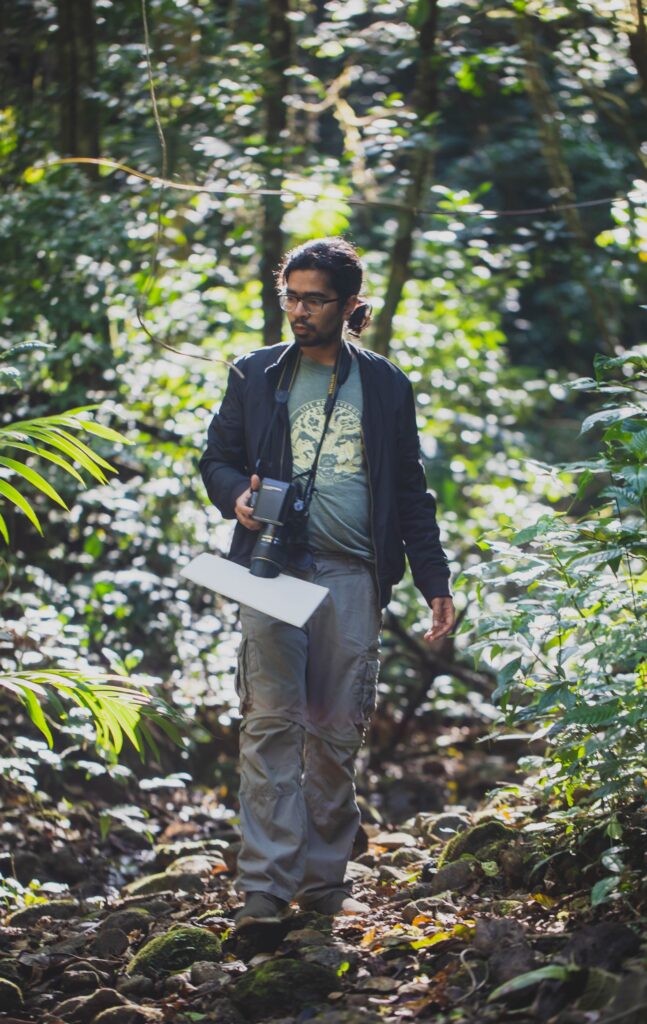My research is about how moths and butterflies sense the world. I want to understand how their eyes and brains have evolved to complicated visual tasks in light-limited environments. I now run the SENSE lab at Case Western Reserve University where we use multiple techniques, including genetics, animal behaviour, and neuroethology, to examine how the senses—sight, hearing, and smell—have evolved in day- and night-flying insects. We are addressing how artificial light disorients insects at night and alters their circadian activity, vision and flight, while also testing strategies to mitigate light pollution.
I received my BS-MS in India working at IISER-Trivandrum collaborating with NCBS-Bengaluru on moth biodiversity in Kerala and butterfly foraging. I received my PhD from Florida International University studying how moths and butterflies see the world, and specifically how moth eyes and brains adapted to function so well under dim light. I use multiple techniques (genetics, animal behavior, neuroscience) to examine how different day and night flying insects’ senses (sight, hearing, smell) have evolved. I completed a postdoc at the Florida Museum of Natural History at the McGuire Center for Lepidoptera and Biodiversity and a postdoc at Georgia Tech University with a courtesy appointment at Florida International University. I am now an assistant Professor at Case Western University in the Biology Department, based out of Cleveland Ohio.
As human civilization develops, artificial light is slowly eroding dark skies with disastrous consequences for animals, plants, and humans. As awareness increases that light pollution is harmful, understanding how different mitigation strategies work is crucial to implement change. I study how light can disorient and alter the circadian activity of insects, and testing strategies to mitigate light pollution. I also work with citizen science and insect biodiversity monitoring in India. Outside of science, I enjoy game nights, photography and reading fantasy novels.
